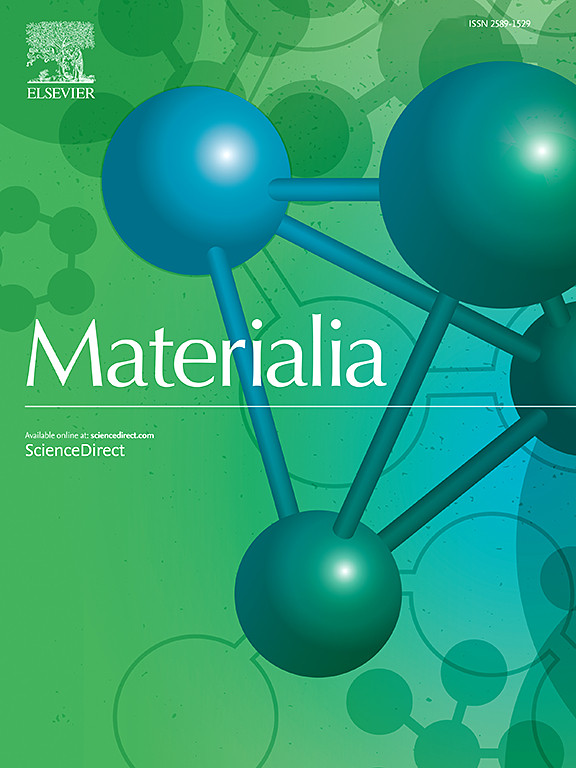Effect of repetition passes in the laser surface texturing of AISI 301LN steel on the anticorrosion properties in molten carbonate salts
IF 3
Q2 MATERIALS SCIENCE, MULTIDISCIPLINARY
引用次数: 0
Abstract
Laser Surface Texturing (LST) has recently emerged as a corrosion mitigation strategy for materials in contact with high-temperature molten salts used in the next-generation Concentrated Solar Power (CSP) technology. Some issues related to the LST parameters, which may affect the corrosion resistance, have not been addressed yet. Therefore, the present work is focused on the effect of laser input density and pass repetitions for improving the corrosion resistance in molten carbonate salts of AISI 301LN stainless steel. The textured surface produced by a nanosecond laser and the oxide scales formed during subsequent corrosion tests in a molten salt mixture of Li2CO3![]() Na2CO3-K2CO3 at 600 °C were analysed by complementary analytical and microscopy techniques. The results showed that the treated-surface samples at high laser power presented a strong decrease in corrosion rate, as compared with the as-received sample. This is attributed to the formation of a thicker and denser protective oxide scale. However, high laser power increased the susceptibility to corrosion at the heat-affected zone (HAZ). It could be effectively prevented with the accumulation of laser repetition passes, offering a new potential approach to maximize the enhancement of corrosion resistance using LST in the design of components for next-generation CSP plants.
Na2CO3-K2CO3 at 600 °C were analysed by complementary analytical and microscopy techniques. The results showed that the treated-surface samples at high laser power presented a strong decrease in corrosion rate, as compared with the as-received sample. This is attributed to the formation of a thicker and denser protective oxide scale. However, high laser power increased the susceptibility to corrosion at the heat-affected zone (HAZ). It could be effectively prevented with the accumulation of laser repetition passes, offering a new potential approach to maximize the enhancement of corrosion resistance using LST in the design of components for next-generation CSP plants.

aisi301ln钢激光表面织构中重复道对熔碳酸盐岩中防腐性能的影响
最近,激光表面纹理(LST)作为一种缓解腐蚀的策略出现在下一代聚光太阳能(CSP)技术中,用于与高温熔盐接触的材料。一些与LST参数相关的问题,可能会影响耐腐蚀性,目前还没有解决。因此,本文研究了激光输入密度和通过次数对提高aisi301ln不锈钢在熔融碳酸盐中的耐蚀性的影响。通过互补分析和显微镜技术分析了纳秒激光产生的纹理表面和随后在600°C Li2CO3Na2CO3-K2CO3熔盐混合物中腐蚀试验中形成的氧化鳞。结果表明,与接收样品相比,高激光功率处理表面样品的腐蚀速率明显降低。这是由于形成了更厚更密的氧化保护层。然而,高激光功率增加了热影响区腐蚀的敏感性。它可以通过激光重复通道的积累有效地防止,为在下一代CSP工厂的组件设计中最大限度地增强LST的耐腐蚀性提供了一种新的潜在方法。
本文章由计算机程序翻译,如有差异,请以英文原文为准。
求助全文
约1分钟内获得全文
求助全文
来源期刊

Materialia
MATERIALS SCIENCE, MULTIDISCIPLINARY-
CiteScore
6.40
自引率
2.90%
发文量
345
审稿时长
36 days
期刊介绍:
Materialia is a multidisciplinary journal of materials science and engineering that publishes original peer-reviewed research articles. Articles in Materialia advance the understanding of the relationship between processing, structure, property, and function of materials.
Materialia publishes full-length research articles, review articles, and letters (short communications). In addition to receiving direct submissions, Materialia also accepts transfers from Acta Materialia, Inc. partner journals. Materialia offers authors the choice to publish on an open access model (with author fee), or on a subscription model (with no author fee).
 求助内容:
求助内容: 应助结果提醒方式:
应助结果提醒方式:


